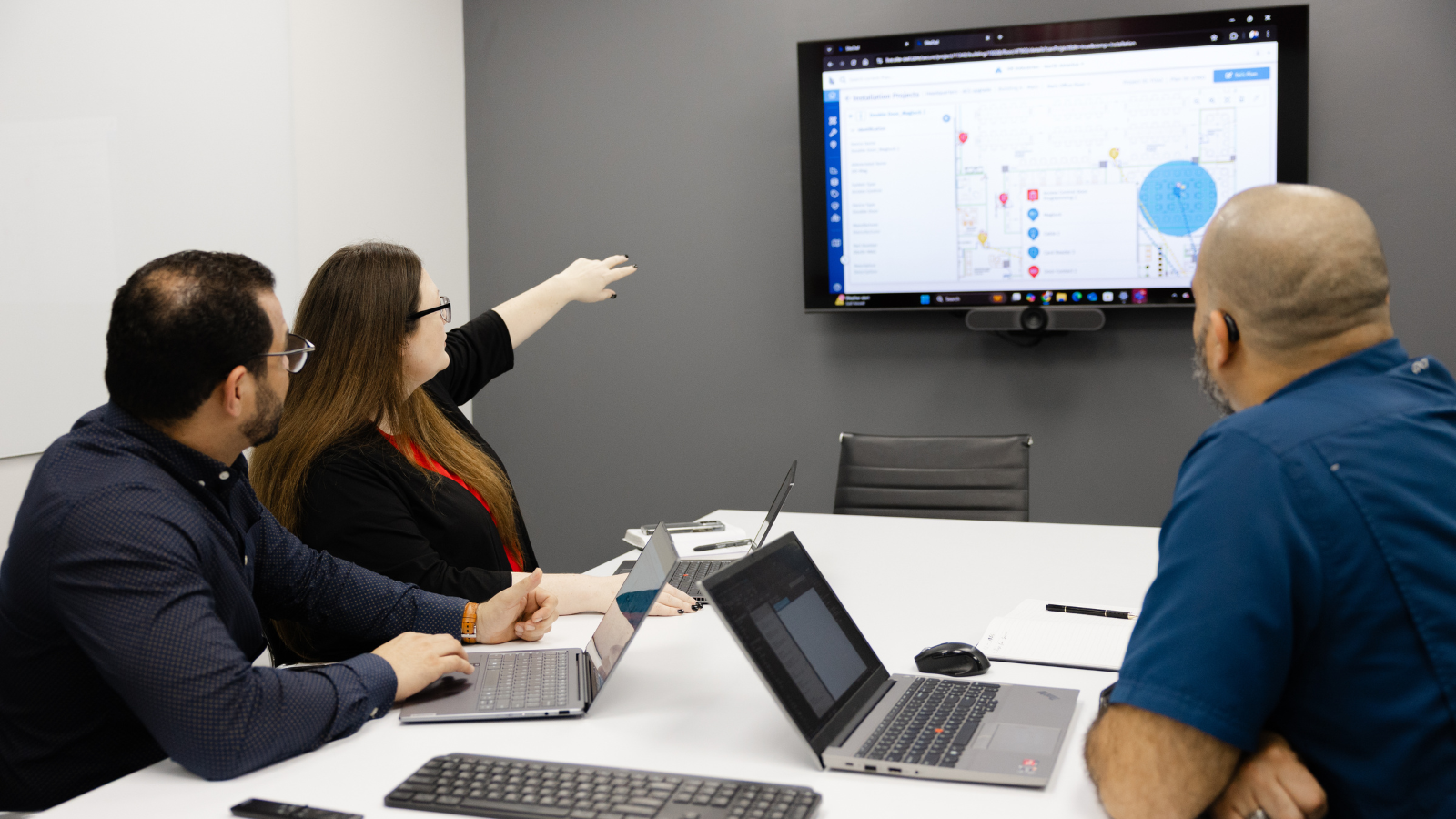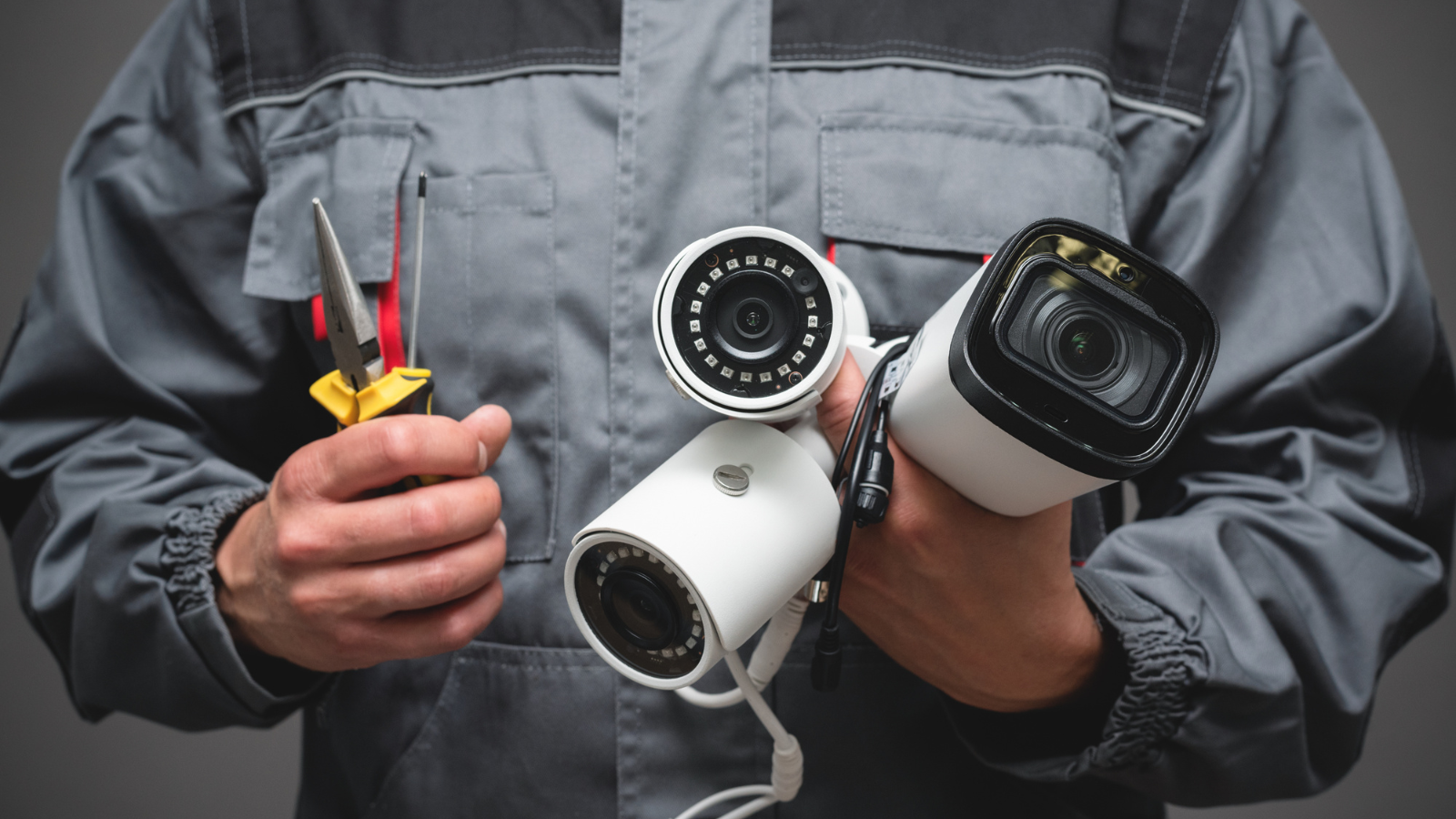A physical security survey is a type of evaluation that a security professional usually conducts to evaluate an organization’s security posture. As a security director, these surveys allow you to assess current security capabilities and consider areas of improvement, from procedures to system upgrades.
While there are many ways to conduct a physical security survey, the acronym I.A.M is a practical and effective three-step process that you can use to review your physical security systems.
- Inspect your current system to identify potential threats and security gaps.
- Analyze the data from your inspection and develop security controls.
- Manage your physical security system using an optimal lifecycle platform.
1-Inspect your current physical security system
Knowing what you need to protect against will help you identify the best security technology for your building. To accomplish this, you must take a systematic approach, starting with a detailed walk-through and evaluation of the facility’s perimeter. From there, you can assess your middle protective layer, including parking areas, lighting, cameras, windows, doors, and alarm systems. Finally, the building interior is assessed, including access control points, scanners, inner rooms, stairwells, and hallways.
It is essential to understand that this standard walk-through is just an example of how to inspect the physical security posture of your facility. Ultimately, as a security director, coordinator, or provider, you should apply the concept as appropriate for the facilities you’re protecting.
Physical security survey checklist
Checklists are recommended tools for conducting a physical security survey. The use of lists dramatically reduces errors and omissions and improves safety. Even basic tasks can benefit from the use of a checklist. In addition, creating a checklist allows you to think through all the steps you need to take to conduct a detailed physical security assessment.
The USDA provides an excellent physical security survey checklist template. Questions within the checklist include:
- What are the regular working hours?
- Is the perimeter of the facility grounds clearly defined by a fence, wall, or other types of physical barrier?
- Are vehicles allowed to park near the perimeter physical barrier?
- Are all entrance and exit gates well-lighted?
- Is a guard service employed?
DOWNLOAD USDA Physical Security Checklist.
Better than paper checklists
Before the advent of digital technologies, managing physical security systems with checklists and spreadsheets was a viable option. But given the sophistication of today’s modern physical security devices and volumes of data generated by new intelligent systems, checklists and spreadsheets are obsolete.
A modern and efficient alternative to relying on outdated tools such as paper checklists or spreadsheets is a cloud-based lifecycle platform that allows you to digitally transform the delivery and management of your security infrastructure.
The table below highlights some of the many challenges physical security system operators face when relying on outdated tools such as checklists and spreadsheets.
2-Analyze and develop security controls
Your analysis should discover deficiencies in your current physical security program, including countermeasures, surveillance, access control, safety, and asset protection programs. As the physical security survey is conducted, your analysis of the findings should help you identify security gaps that could compromise your existing security measures. For example, vulnerabilities in your physical security program, such as weak perimeter security or limited monitoring capabilities, increase the chances of an incident.
In addition to conducting a site survey, your physical security survey should include examining local criminal activity, past security events, as well as any other relevant threats that may impact your business operations.
While it is best to consult with a professional physical security expert, it is important to use established security industry methodologies to analyze and implement effective physical security measures.
Trusted physical security guidelines can be found in the following sources :
- Guide for conducting Risk Assessments from the National Institute of Standards and Technology (NIST).
- Best Practices for Planning and Managing Physical Security Resources, An Interagency Security Committee Guide.
- Use of Physical Security Performance Measures, Department of Homeland Security.
3-Manage your physical security systems
With your survey and analysis completed, your top priority is ensuring that you have the right system to manage your physical security systems. Managing physical security resources is a holistic process that requires strategic planning, identifying goals and performance objectives, and justifying and applying a realistic budget that supports your physical security program.
Despite the wide range of root causes, the leading cause of poor-performing physical security systems is a lack of maintenance. But here’s the challenge: Regardless of any financial or organizational challenges, you need a data-driven, dynamic physical security strategy to stay ahead of emerging threats.
Often, resource-constrained organizations underestimate maintenance needs and costs. But here’s the problem: Manual maintenance checks are not scalable and expensive. Even worse, they are often the root causes of information silos, limited security awareness, and many other shortcomings.
SiteOwl offers the security industry’s first and only lifecycle management platform built for both integrators and system owners. With SiteOwl, you can leverage the power of technology to streamline the lifecycle management of your physical security systems. For example, a leading credit union with over 700K members used SiteOwl to streamline the management of their physical security systems across 60 branches nationwide.
Summary
A physical security survey is a great tool that should be part of your security program. But it should not be confused with the overall risk assessment that you should conduct regularly. The purpose of a physical security survey is not to spend as much money as possible but rather to identify risks, analyze countermeasures, and identify ways to stay on top of ongoing system maintenance issues.
From strategic planning to routine maintenance, full visibility is needed to stay on top of ongoing security system deployments and maintenance work in real-time. The good news is that you can choose to manage your physical security systems with a cloud-based lifecycle platform instead of using antiquated methods like paper checklists or spreadsheets.
SiteOwl’s cloud-based platform allows for centralized visibility of a physical security system throughout its lifecycle. With SiteOwl, you can empower your team with the tools they need to isolate problems, generate tickets, and keep your system running with minimal downtime.

Su Subburaj
Su is SiteOwl's CMO and leads all marketing and communications. Su has extensive strategy and management consulting experience and previously consulted for 3Sixty Integrated where she gained an in-depth understanding of digital transformation challenges in the physical security industry. When not working on strategies to expand SiteOwl's footprint, Su enjoys bad karaoke, weightlifting and traveling.




